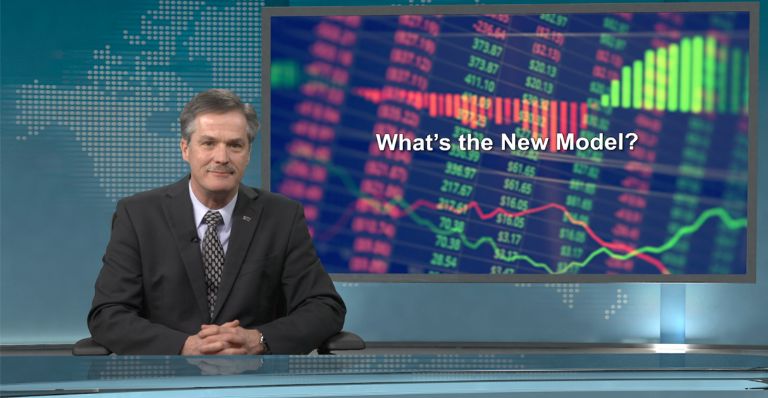Economic models have gone through the wringer in the past decade. Time and again, notable experts have moaned that the old axioms are outdated, that we are in a new reality, and that the rule book is being rewritten. Amid the real-time recalibration, forecasts must go on—leaving the lay-person wondering, I’m sure, just what kind of patchwork exercise it is. Is a new model of the economy in the works, and if so, what does it look like?
Model-based economic analysis has been around for decades. The algorithms were originally borrowed from physics models, as the simultaneity of electronic processes closely paralleled economic interactions. The first economic models were greeted with broad enthusiasm, but poor initial performance turned many off, casting serious doubt on this more scientific approach.
Undaunted, serious modelers dug in, developing and refining estimation techniques, tests, filters and such, allowing for more judgment to be imposed on the mathematical constructs. Respectability was regained, and generally today’s more sophisticated forecasters have model-based systems in place.
It’s not just the economists; armed with an almost endless torrent of high-frequency data points, financial modelers are a significant force in the global economy today. It’s not all positive; the limitations of these models were all too obvious in high-profile corporate cases like Enron, and the Great Recession put models with a similar short-term focus in a very poor light: they contributed to the near-collapse of the global financial system in 2008. That scare incited fear and even anger that models could wield this much power, and almost bring widespread ruin.
Thankfully, renewed cynicism didn’t creep over to the economics sector. However, we’ve suffered our own post-recession knocks. Initial projections of fast recovery accompanied the immediate massive multi-country stimulus program, only to fall flat when spending peaked. Since then, the profession has largely been red-faced, scrambling to predict the future from the swamp of unusually protracted sluggishness. Prominent pundits have wondered out loud whether the models are broken.
It’s almost funny that at the same time the industrial world is talking about robotics, machine learning and artificial intelligence, the mechanized part of the economics profession is in a quandary. Perhaps it is revealing that in processes that are largely repeatable, however complex, learning can occur. For the economy, which has repeatable elements but a lot of other loose-cannon stuff going on, robotic tools, artificial intelligence and the like may have a long way to go before being useful.
To be more specific, machine learning tends to look at short-dated correlations, and seems less concerned about causation. That might be all right in a normal economic cycle; but layer in all the oddities of this one—fiscal stimulus, extraordinary monetary policy, protectionism, governance changes and so on—and machines, left to themselves, have a tougher time. And if we are right in saying that the last cycle was stretched out to almost twice the normal size, well, all models would suffer from being calibrated on data series that are simply not long enough.
Put another way, it seems that in economics, the models are still dependent on the human element. Today’s circumstances actually require experience and longer-term memory of events in order to get the relationships right. It suggests that for the time being, ageing workers that have intact recollections of the past are unusually valuable to the financial, economic and business strategy worlds. Machines may catch up, but when it comes to the future, there is still a lot of art to add to the science of the previsionaire.
The bottom line?
Forecasting has always been a tough profession; ask the weathermen of yore. Data and computing power are giving rise to ever more sophisticated forecasting tools, but for the economic and financial worlds, a great deal of caution is still needed, especially when it comes to automated processes. Big data does not imply or guarantee better results. There may come a day when we have most of it figured out, but current-day limitations strongly suggest a heavy human hand—a visible one, in this case—as a key part of the process.
This commentary is presented for informational purposes only. It’s not intended to be a comprehensive or detailed statement on any subject and no representations or warranties, express or implied, are made as to its accuracy, timeliness or completeness. Nothing in this commentary is intended to provide financial, legal, accounting or tax advice nor should it be relied upon. EDC nor the author is liable whatsoever for any loss or damage caused by, or resulting from, any use of or any inaccuracies, errors or omissions in the information provided.





